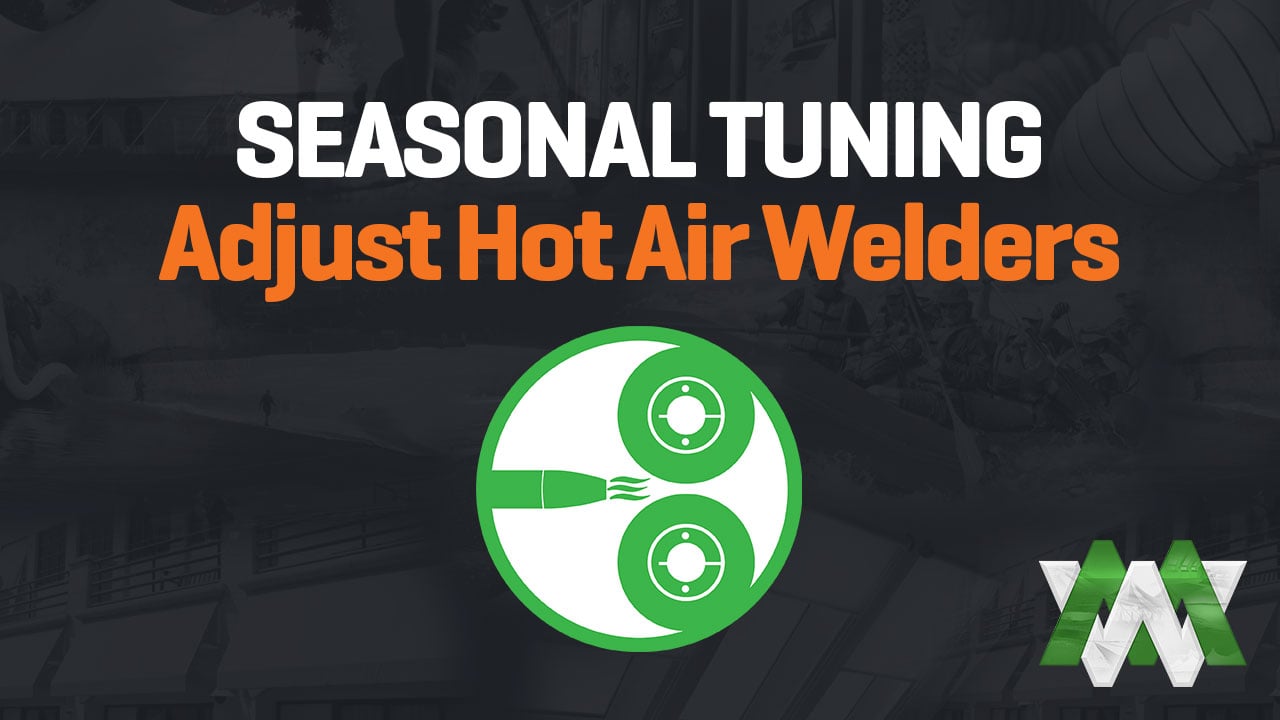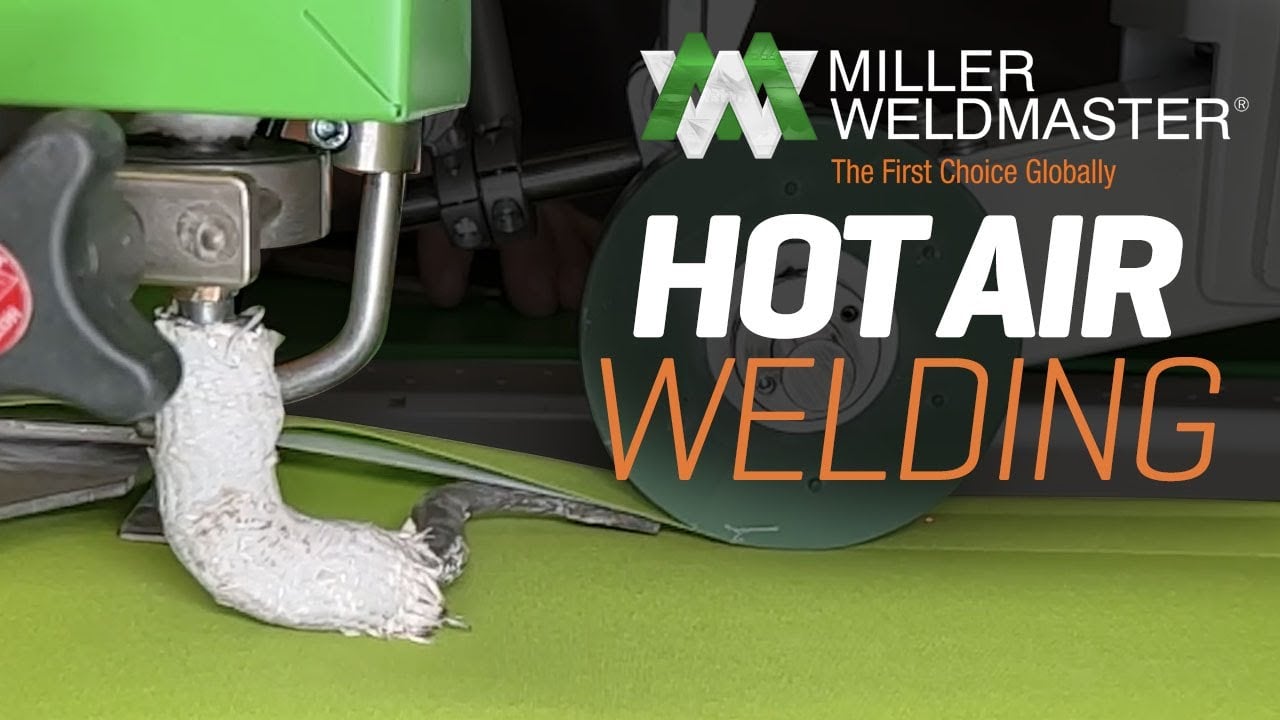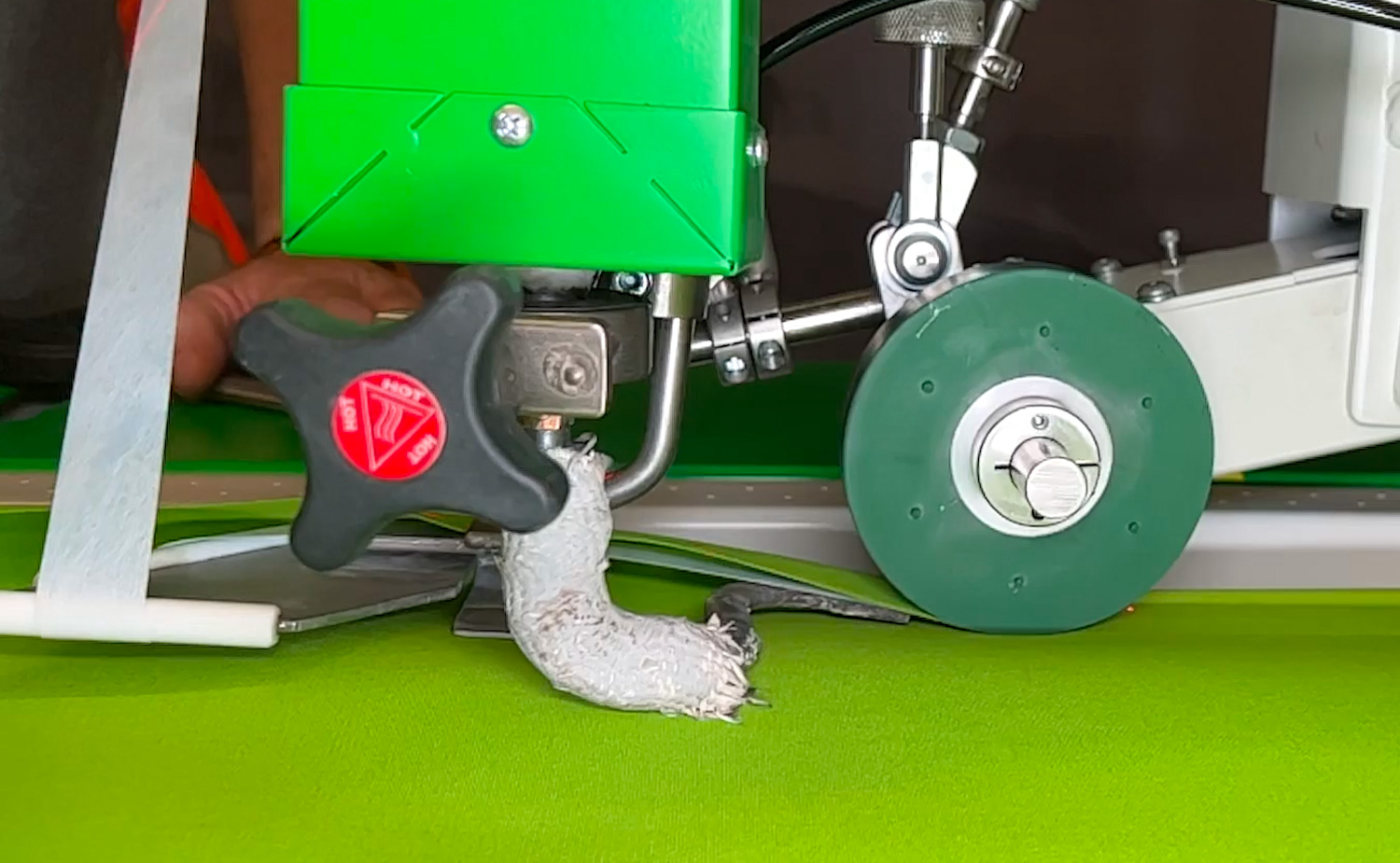When it comes to fabric welding, ignoring early warning signs can lead to costly downtime, defective products, declining weld quality, and expensive repairs. Spotting issues early is the best way to avoid sudden breakdowns, ensure safe and effective operation of your hot air welder, and keep your operation running smoothly. Hot air welding machines fuse thermoplastic materials using heat, pressure, and motion. This comprehensive guide will walk you through the most common signs your hot air welder needs maintenance and what to do first when you notice them.
Learn more about the fundamentals of hot air welding technology.
Why Catching Maintenance Issues Early Is Critical
Minor hot air welder performance problems often escalate into major failures if left unchecked. For example, something as small as a partially blocked nozzle can cause uneven seams, which may ruin an entire production run. Spotting issues early is the best way to avoid sudden breakdowns. Catching issues at the early signs stage—such as unusual noises or heat-related stress—can prevent further damage and keep equipment running smoothly. A well-executed hot air weld should have no gaps, burns, or bubbles for quality assurance.
A simple cleaning could prevent hours of rework and hundreds of dollars in lost material. Performing basic maintenance steps, like routine inspections and troubleshooting, at this stage can address problems before they worsen. Proactive maintenance is always more affordable than emergency repairs.
A visual comparison often says it best:
-
Minor Issue: Nozzle cleaning, 5 minutes of downtime, negligible cost.
-
Major Repair: Burnt heating element replacement, hours of downtime, significant repair costs—neglecting early signs can result in costly repairs.
By recognizing issues early, operators can stop small problems before they become production-stopping failures.
5 Clear Signs Your Hot Air Welder Needs Maintenance
Sign 1: Uneven or Weak Seams
-
What it looks like: Loose bonding, peeling, inconsistent seam strength, weak welds.
-
Why it happens: Roller misalignment, worn rollers, or fluctuating heat can affect weld quality. Inaccurate temperature displays can signify malfunctions in the control circuitry or temperature sensor.
-
What to do first: Run a calibration test, inspect rollers, check nozzle alignment, and look for signs of poor welds.
Maintaining weld quality is essential to avoid weak welds and ensure strong, reliable welds.
Sign 2: Discolored, Burnt, or Damaged Material
-
Symptoms: Scorching, melted spots, warped edges, heat damage.
-
Likely causes: Overheating, airflow restriction, failing heating element, high temperatures causing damage to internal components, and moisture as an environmental factor that can worsen material damage. The heating element should glow orange uniformly when heated; partial illumination indicates it is broken and needs replacement.
-
First step: Verify temperature settings, inspect the heating element, and check airflow.
Sign 3: Strange Noises, Vibrations, or Odors
-
Symptoms: Grinding sounds, shaking, burning smells, worn components.
-
Likely causes: Worn bearings, loose components, motor problems.
-
First step: Power down immediately, inspect rollers and moving parts, inspect for worn parts and replace worn components as needed, and call for service if unresolved.
Ignoring these symptoms can result in internal component failure, leading to costly repairs and extended downtime.
Sign 4: Feeding or Speed Inconsistencies
-
Symptoms: Jerky movement, uneven feeding, speed fluctuations.
-
Causes: Misaligned rollers, worn belts, calibration drift, or issues with key components such as drive motors and control circuits that may contribute to speed inconsistencies.
-
First step: Clean debris, inspect belts and rollers, inspect leads for wear or damage, and recalibrate machine settings.
Sign 5: Frequent Overheating or Emergency Shutdowns
-
Symptoms: Overheating mid-process, warning lights, sudden stops.
-
Causes: Clogged airflow, electrical faults, failing sensors, power supply problems, power source issues, or electrical issues.
-
First step: Clear airflow paths, replace or clean filters, and call for service if it repeats. Repeated overheating can eventually lead to equipment failure if not addressed.
What to Do First: A Quick-Action Checklist
When your welder shows any of the above signs, take these immediate steps:
-
Power down and allow the machine to cool.
-
Inspect nozzle, rollers, and belts for visible issues.
-
Verify temperature and speed settings.
-
Clean debris or buildup in critical areas.
-
If the issue repeats, contact a service professional.
Tips for Ongoing Care:
- Schedule regular inspections and cleaning to maintain optimal performance.
- Follow manufacturer guidelines for proper maintenance, including timely part replacement and calibration.
- Keep a log of error codes and address them promptly to catch issues early.
A simple operator checklist can prevent small hiccups from turning into full production stops, helping you maintain your welder and ensure proper maintenance.
Prevent Bigger Problems: Proactive Next Steps
While this guide focuses on spotting issues, prevention is the ultimate goal. Operators can protect welders by: Keeping machines out of direct sunlight can prevent heat buildup that accelerates internal component failure.
-
Documenting all recurring issues.
-
Scheduling regular inspections.
-
Prioritizing regular maintenance and scheduling service appointments to extend the life and long term durability of your equipment.
- Maintaining and replacing consumables, and controlling moisture in storage areas to catch issues early and prevent damage to both equipment and weld quality.
- Keeping spare parts like rollers, belts, and heating elements on hand.
For a deeper preventive strategy, see our detailed guide on fabric welding machine service plans, and learn how ongoing maintenance can help in extending the life of your equipment.
Miller Weldmaster: Helping You Solve Issues Before They Grow
At Miller Weldmaster, our machines are designed with durability, safe equipment, and compliance with industry standards in mind. From training to service plans, our support team helps operators identify early warning signs and take corrective action before issues impact production, ensuring your operations remain efficient and deliver better welding results. We emphasize the importance of using the correct power source and plug for optimal machine performance and safety. With decades of industry expertise, we ensure your machines stay reliable and productive by supporting timely parts replacement and leveraging leading technology for a dependable welding process and consistent welding results.
Frequently Asked Questions About Hot Air Welder Issues
What are the first signs of hot air welder failure?
Weak seams, overheating, or unusual noises are often the earliest signs.
How do I know if my welder nozzle is damaged?
Check for visible clogging, uneven heat distribution, or burnt material edges.
Why is my hot air welder making unusual noises?
Strange sounds may signal worn bearings, loose components, or roller misalignment.
Can poor seam quality mean my welder needs repair?
Yes. Weak, peeling, or uneven seams often indicate roller or nozzle issues.
What should I do if my welder keeps overheating?
Inspect airflow, filters, and heating elements. If the issue persists, call for service.
When should I call for professional service vs. DIY?
Minor cleaning or calibration can be handled in-house. Persistent or recurring issues should be escalated to service professionals.
How do I avoid recurring hot air welder issues?
Regular inspections, documenting problems, and following manufacturer maintenance guidelines are key.
Are some parts more prone to failure than others?
Yes. Nozzles, rollers, belts, and heating elements are common wear parts.
Where can I find reliable service and replacement parts?
Miller Weldmaster offers global service and genuine OEM parts to keep your machines operating at peak performance.





